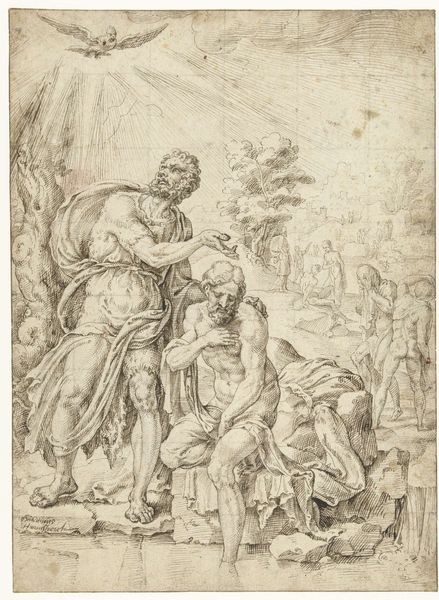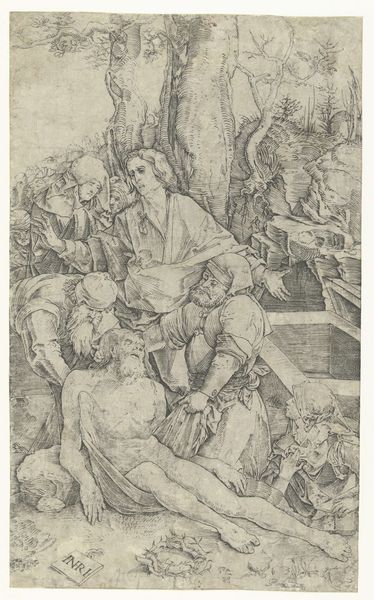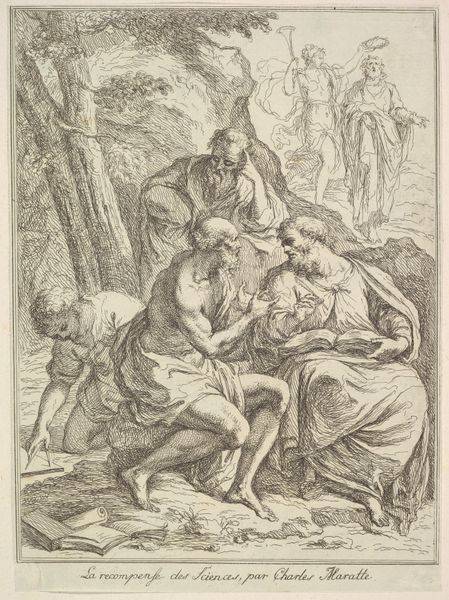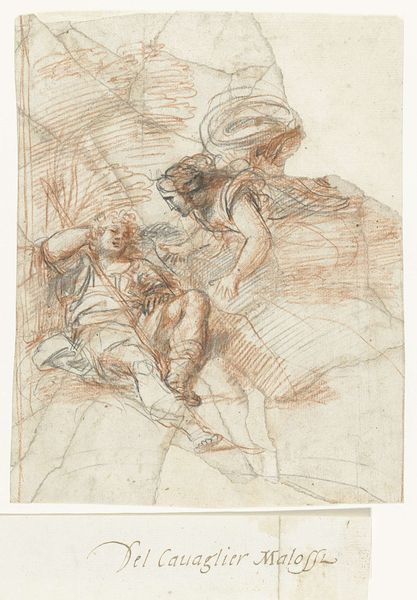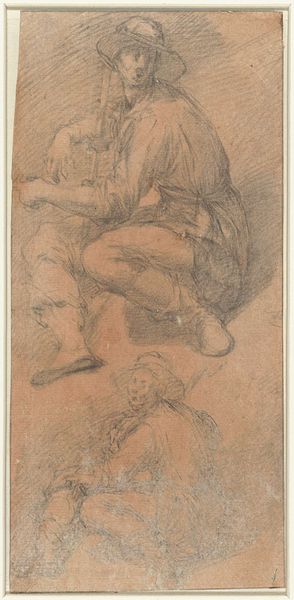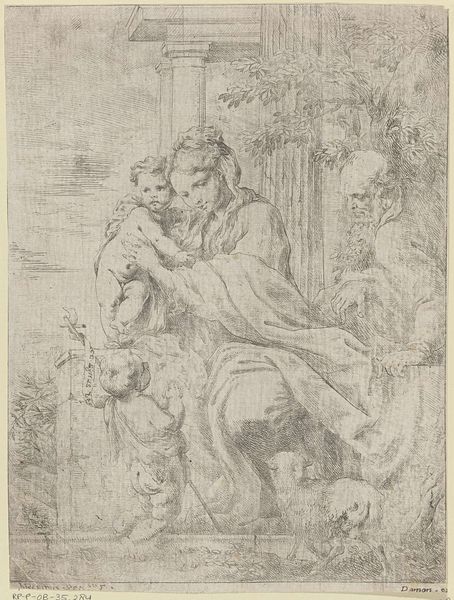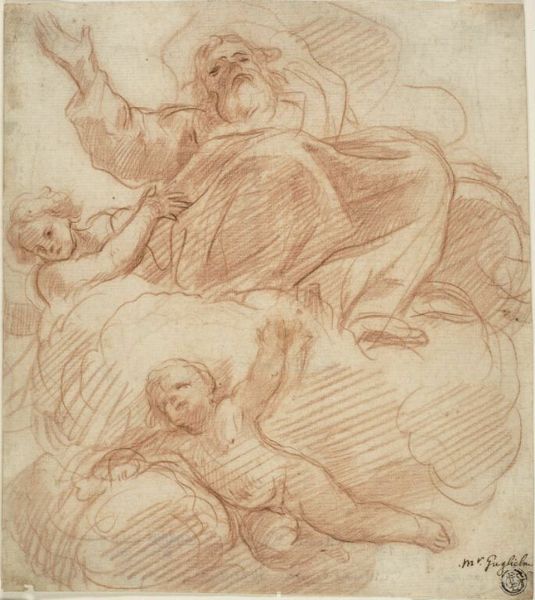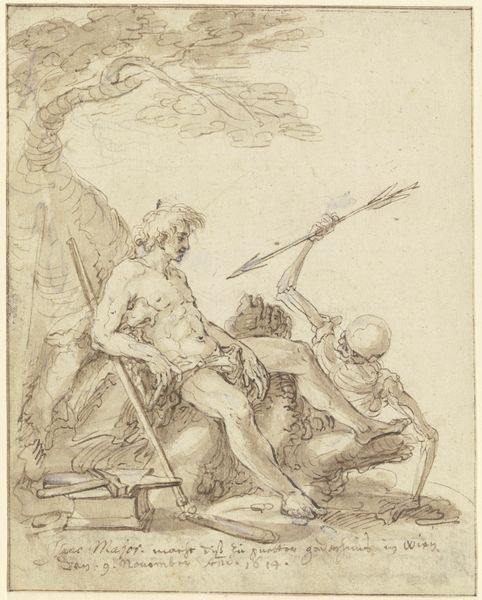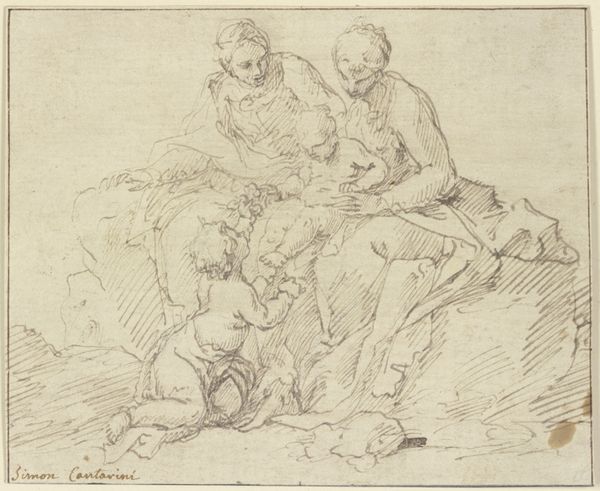
drawing, pencil
#
drawing
#
allegory
#
baroque
#
pencil sketch
#
figuration
#
pencil
#
history-painting
Dimensions: height 233 mm, width 181 mm
Copyright: Rijks Museum: Open Domain
Editor: So, this is Alessandro Algardi's pencil drawing, "Minerva as Rome," from sometime in the mid-17th century. It's quite dynamic! All those swirling pencil strokes… what stands out to you? Curator: Well, beyond the baroque dynamism you mentioned, I immediately consider the materiality of the piece. This isn't just about illustrating a mythological scene; it’s about Algardi’s labor and the function of drawing in 17th century workshops. Pencil, in particular, lends itself to this process of planning and development. How might this study be related to larger sculptural works or commissions? Editor: That’s fascinating. So, it's less about the "finished" product and more about… the process? Curator: Exactly! Think about the context. Drawing served as a crucial stage in artistic production. It was the method of designing a project, testing solutions and delegating designs to workshops that involved numerous contributors. And that matters. How do the allegorical themes intertwine with the practicalities of artistic production and the systems that defined "art"? Editor: The allegory does bring up ideas of history and power! It looks like Minerva protects Romulus and Remus, as symbols of Rome’s military strength, all rendered using inexpensive and ubiquitous material… interesting juxtaposition! Curator: Precisely. The availability of pencils, the cost of paper, and the time devoted to this sketch all contribute to its meaning. Consider how the mass production or consumption of this piece would influence that message. What does it say that such potent symbolism might begin its life in the artist’s workshop on the most modest support, on humble paper? Editor: It certainly adds a new layer to my understanding of "Minerva as Rome." I am no longer just seeing the goddess, but how drawings became objects. Thank you! Curator: And I, you, as that connection emphasizes the intersection of classical themes with social and practical circumstances, to fully understand artworks.
Comments
rijksmuseum about 2 years ago
⋮
The sculptor Algardi mainly drew in preparation for his (portrait) sculptures and reliefs. In the case of this drawing, however, no sculpture is known. It is therefore quite possible that this sheet served as a design for a print. The goddess Minerva, recognizable by her helmet, personifies Rome here. Depicted at her feet are the city’s founders Romulus and Remus being suckled by a wolf.
Join the conversation
Join millions of artists and users on Artera today and experience the ultimate creative platform.
